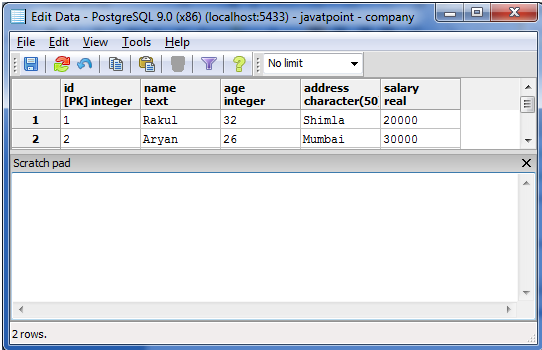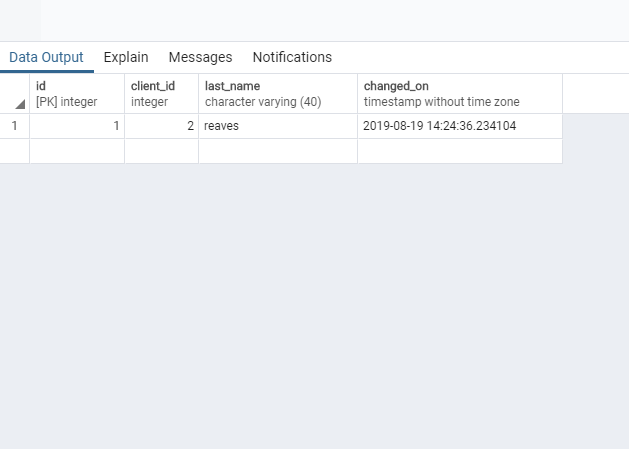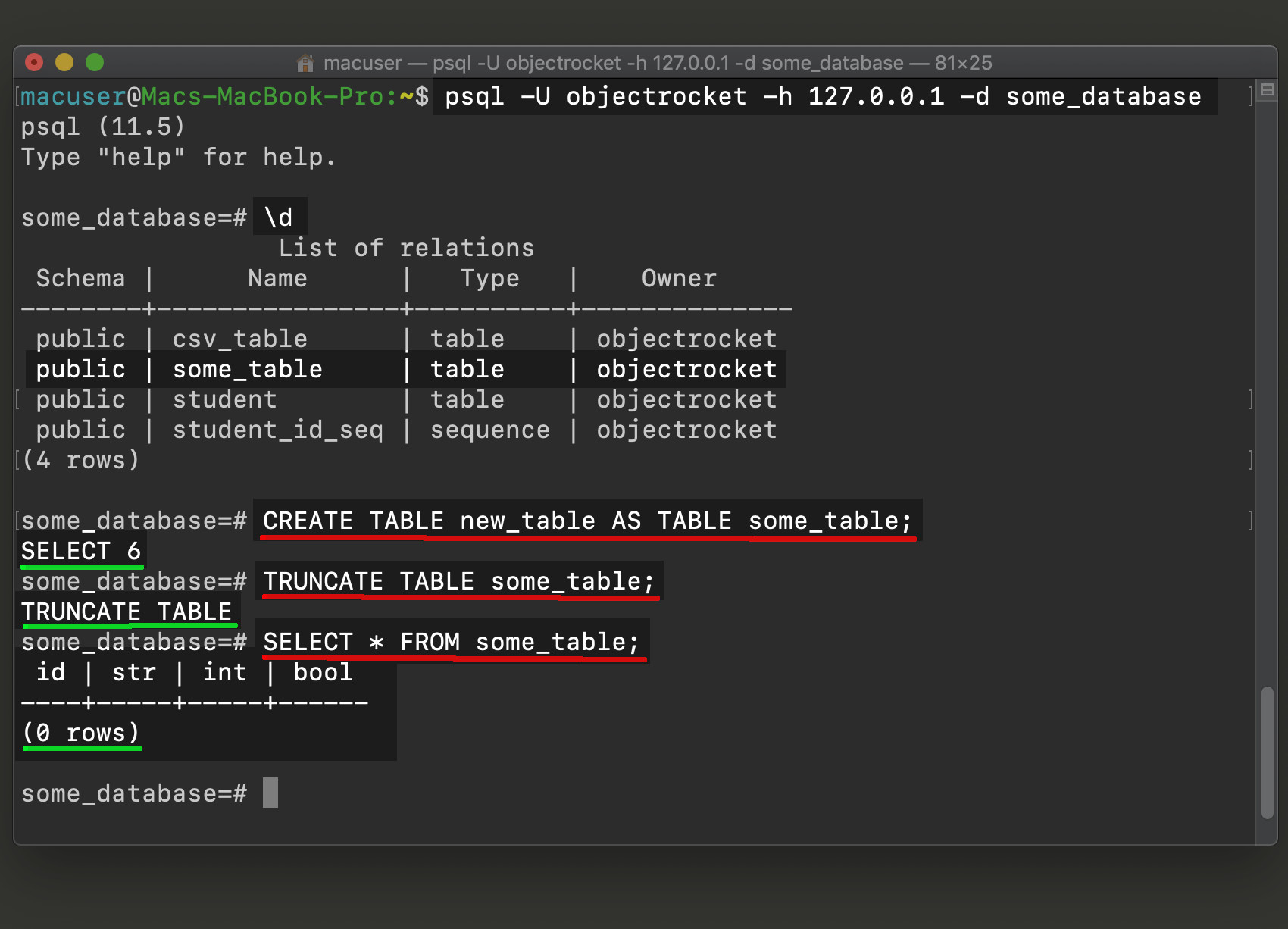

If a trigger function executes SQL commands then these commands might fire triggers again. We'll create a trigger function first which can be used by a trigger: Create the trigger using that trigger function.2 steps to write a trigger in PostgreSQLĪ fully functioning trigger in PostgreSQL can be created in just two steps:

Invalid indexes (less than 0 or greater than or equal to tg_nargs) result in a null value. The arguments from the CREATE TRIGGER statement. Can be INSERT, UPDATE, DELETE, or TRUNCATE. Shows the operation that triggered the trigger. Indicates whether trigger is ROW or STATEMENT level. TG_WHENĪ string of BEFORE, AFTER, or INSTEAD OF, depending on the trigger's definition. This variable is null in statement-level triggers and for INSERT operations. Holds the old database row for UPDATE/DELETE operations in row-level triggers. This variable is null in statement-level triggers and for DELETE operations. Holds the new database row for INSERT/UPDATE operations in row-level triggers. We'll take a look at some of the common ones: NEW Note that the function must be declared with no arguments even if it expects to receive some arguments specified in CREATE TRIGGER. With PL/pgSQL function as a trigger, there are some variables automatically created at the top-level block. Trigger functions can be written in most of the procedural languages including PL/pgsql, Perl, Python. Special local variables named TG_something are automatically defined to describe the condition that triggered the call. Trigger functionĪ trigger function is created with the CREATE FUNCTION command, declaring it as a function with no arguments and a return type of trigger for data change triggers. Doing a rollback for those X transactions means all the trigger changes will be undone in the same X transactions. Triggers in a transaction execute in the same transaction (BEFORE or AFTER).


We'll be looking at data changes i.e., triggers that run BEFORE/AFTER INSERT, UPDATE, DELETE operations on a table. Triggers can be created for data changes or database events. In this article, we'll go through the basics of setting up triggers in PostgreSQL and a few examples to see how they can be used. In javascript, you can set up an event handler for a button click. You can relate to triggers as event handlers in javascript.
#POSTGRESQL ALTER TABLE DROP TRIGGER EXAMPLE CODE#
Database triggers are a way to run a piece of code when a predefined operation occurs on the database.


 0 kommentar(er)
0 kommentar(er)
